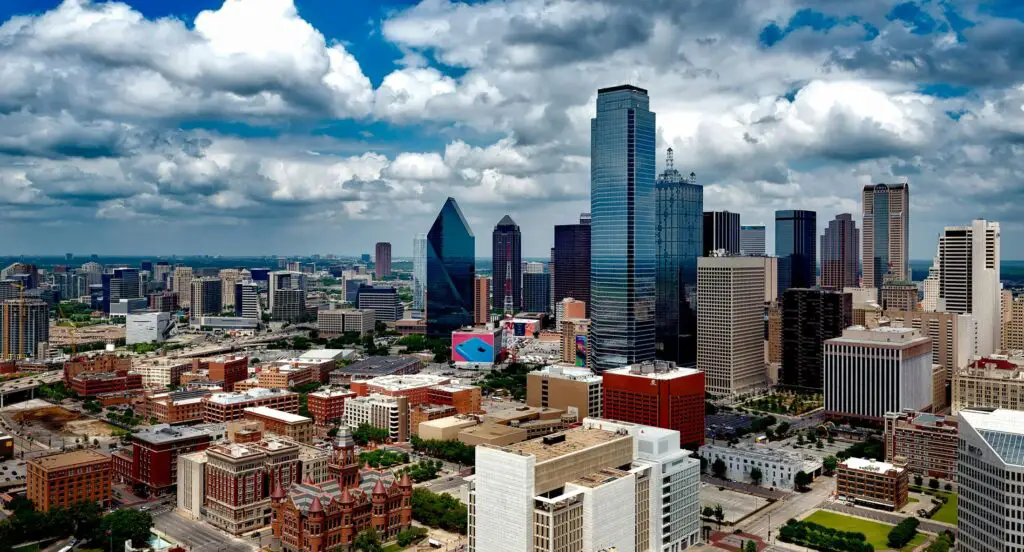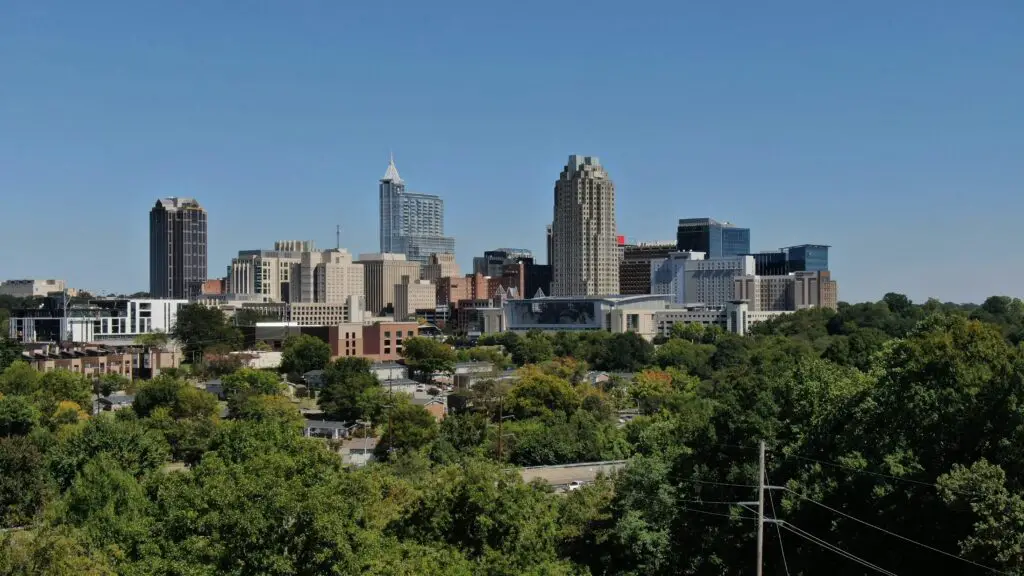As climate change accelerates and natural disasters grow more frequent, homeowners across the U.S. are facing skyrocketing insurance premiums. From hurricanes and wildfires to flooding and extreme weather, insurers are pulling back from high-risk areas, leaving homeowners with limited—and increasingly expensive—options. By 2026, experts predict that home insurance will become unaffordable in multiple states, forcing many residents to reassess their living situations.
1. Florida

Florida’s home insurance market is in crisis due to the state’s extreme weather risks, particularly hurricanes. In recent years, storms like Hurricane Ian and Hurricane Idalia have caused billions of dollars in damage, leading insurers to either drastically raise premiums or withdraw from the state entirely. Homeowners are now paying some of the highest insurance costs in the country, with the average premium exceeding $6,000 per year—nearly four times the national average. According to the Insurance Information Institute, more insurers are expected to leave Florida by 2026, further shrinking competition and driving costs even higher.
The situation is exacerbated by rampant litigation and insurance fraud, which have contributed to the instability of the market. Many Floridians have been forced to turn to Citizens Property Insurance Corporation, the state-backed insurer of last resort, which is also experiencing financial strain. If trends continue, thousands of homeowners could find themselves unable to afford coverage or even lose access to insurance altogether. With more intense hurricanes predicted due to climate change, Florida’s home insurance crisis is likely to deepen in the coming years.
2. California

California’s escalating wildfire crisis has made it one of the riskiest states for insurers. Massive wildfires, like the 2021 Dixie Fire and the 2023 Rabbit Fire, have devastated entire communities, causing billions of dollars in insured losses. As a result, major insurance companies—including State Farm and Allstate—have stopped issuing new policies in high-risk areas, citing unsustainable financial risks. According to The Los Angeles Times, home insurance premiums in wildfire-prone regions have already doubled or even tripled in some cases, with further increases expected by 2026.
Many homeowners have been left with no choice but to seek coverage through California’s FAIR Plan, a last-resort insurance program that provides limited protection at much higher costs. The state government has attempted to introduce reforms to stabilize the insurance market, but progress has been slow. If wildfires continue at their current rate, even basic coverage could become prohibitively expensive for many Californians, forcing some to relocate.
3. Louisiana

Louisiana faces one of the most severe home insurance affordability crises in the country. The state is highly vulnerable to hurricanes, with storms like Hurricane Katrina, Hurricane Laura, and Hurricane Ida causing repeated destruction. As a result, many private insurers have left Louisiana, leading to soaring premiums for residents. According to NOLA.com, Louisiana homeowners have seen insurance rates increase by over 60% in the last three years, with no signs of slowing down.
The state’s insurer of last resort, Louisiana Citizens, has also struggled to keep up with demand, forcing many policyholders to pay even higher costs. In some coastal areas, insurance premiums have doubled in just a few years, putting immense financial strain on homeowners. Experts warn that unless significant reforms are made, home insurance in Louisiana could become unaffordable for all but the wealthiest residents by 2026.
4. Texas

Texas has experienced a sharp rise in home insurance costs due to its exposure to hurricanes, tornadoes, and severe storms. In 2023 alone, the state saw record-breaking hail damage and a series of destructive hurricanes along the Gulf Coast. According to The Texas Tribune, the increasing frequency of extreme weather events has driven insurance premiums up by more than 30% in some areas, with coastal regions being hit the hardest.
In addition to natural disasters, inflation and rising construction costs have also contributed to higher premiums. Many insurers have tightened their policies or introduced higher deductibles, making it even more expensive for homeowners to maintain coverage. If these trends persist, many Texans—especially those in high-risk areas—may find home insurance costs unsustainable by 2026.
5. Mississippi

Mississippi’s home insurance market is becoming increasingly unstable, driven by the threat of hurricanes and flooding. The state has been hit by multiple major storms in recent years, leading to costly insurance claims and financial losses for insurers. As a result, companies have responded by significantly raising premiums or exiting the market altogether. According to The Clarion Ledger, Mississippi’s home insurance rates have jumped by more than 40% since 2020, with projections indicating further increases in the coming years.
Many homeowners are struggling to find affordable coverage, especially in coastal areas. Some have been forced to accept policies with sky-high deductibles or reduced protections, leaving them vulnerable to financial ruin in the event of a disaster. With climate change making hurricanes more intense, Mississippi’s insurance affordability crisis is likely to worsen by 2026.
6. Alabama

Alabama’s proximity to the Gulf of Mexico makes it highly susceptible to hurricanes, flooding, and severe storms. The increasing frequency of these disasters has led insurance companies to reassess their risk exposure, resulting in rising premiums and stricter policy terms. According to AL.com, homeowners in coastal counties like Mobile and Baldwin have seen their insurance rates surge by over 35% in the past five years, with further hikes expected through 2026. Some insurers have even begun pulling out of high-risk areas, leaving residents with limited and costly options.
Compounding the problem, Alabama’s home values have increased, pushing replacement costs higher and further driving up insurance rates. Many homeowners are now being forced into the state’s last-resort insurance plan, which offers fewer protections at significantly higher costs. If the trend continues, home insurance in Alabama may become unaffordable for thousands of residents, especially in hurricane-prone regions.
7. South Carolina

South Carolina’s coastal cities, such as Charleston and Myrtle Beach, have experienced some of the steepest insurance rate hikes in the country. The combination of rising sea levels, stronger hurricanes, and frequent flooding has made insurers wary of taking on new policies. According to The Post and Courier, home insurance costs in South Carolina have jumped by more than 40% in just the past three years, with additional increases anticipated by 2026.
To mitigate their losses, many insurers have started enforcing higher deductibles for hurricane-related claims or have stopped offering coverage in certain zip codes altogether. As a result, many homeowners are being pushed toward expensive surplus insurance markets or state-backed plans with limited benefits. Without significant intervention, the cost of insuring a home in South Carolina may soon be out of reach for many residents.
8. Georgia

While Georgia is not as hurricane-prone as some of its neighbors, it has still faced a growing home insurance crisis. Severe storms, tornadoes, and occasional tropical systems have led insurers to reassess their risk models, leading to sharp increases in premiums. According to The Atlanta Journal-Constitution, homeowners in Georgia have seen their insurance costs rise by over 30% since 2020, with rural areas and older homes being hit the hardest.
Beyond weather risks, inflation and rising home repair costs have also played a major role in driving up rates. Many insurers have introduced new restrictions on coverage, forcing homeowners to pay more out of pocket for damages. If these trends continue, Georgia’s home insurance market could become increasingly unaffordable by 2026, particularly for those in high-risk zones.
9. North Carolina

North Carolina’s coastal and inland regions have both suffered from rising insurance costs due to hurricanes, flooding, and severe storms. Areas like the Outer Banks and Wilmington have been especially impacted, with many insurers either withdrawing from the market or drastically increasing their premiums. Some homeowners have seen their insurance bills double in the past five years, with projections indicating even steeper hikes by 2026.
One of the biggest concerns in North Carolina is the availability of wind and hail insurance, which has become significantly more expensive in recent years. Many residents are now being forced into high-risk insurance pools, where premiums are substantially higher than standard policies. With climate change making hurricanes and extreme weather events more frequent, home insurance affordability in North Carolina is expected to deteriorate even further.
10. Colorado

Colorado may not face hurricanes, but its insurance crisis is driven by wildfires, hailstorms, and extreme weather events. The devastating Marshall Fire in 2021, which destroyed over 1,000 homes, was a turning point for insurers operating in the state. Homeowners in fire-prone regions have seen their insurance costs rise by as much as 50% in the last three years, with further increases expected.
Hail damage is another major factor driving up insurance costs in Colorado, as severe storms have led to billions of dollars in claims. Some insurance companies have responded by increasing deductibles, limiting coverage, or pulling out of certain areas entirely. If these trends persist, many Coloradans could find home insurance unaffordable by 2026, particularly in wildfire-prone zones.
11. Oklahoma

Oklahoma’s home insurance crisis is largely driven by tornadoes and severe storms. The state is located in “Tornado Alley,” where extreme weather events cause billions of dollars in damage every year. Insurers have raised premiums significantly to offset these risks, with some homeowners seeing increases of over 40% since 2020. Experts warn that premiums could rise even further, making home insurance prohibitively expensive for many residents by 2026.
Another challenge in Oklahoma is the rising cost of materials and labor, which has made home repairs more expensive. Insurers have responded by increasing deductibles and limiting coverage, forcing homeowners to take on greater financial risk. If extreme weather patterns continue, Oklahoma’s home insurance market could become unsustainable in just a few years.
12. New York

New York’s home insurance market is under pressure due to a combination of rising sea levels, hurricanes, and flooding. While much of the focus is on coastal areas like Long Island and New York City, inland regions have also been affected by severe storms. Insurance premiums in flood-prone areas have surged by over 35% in recent years, with no signs of slowing down.
The state’s vulnerability to extreme weather, coupled with rising construction and labor costs, has forced insurers to reevaluate their policies. Many homeowners are now facing higher premiums, reduced coverage options, or stricter underwriting standards. If these trends continue, home insurance in parts of New York could become unaffordable for many residents by 2026.
